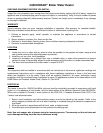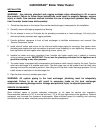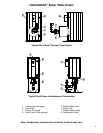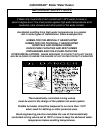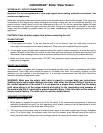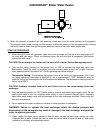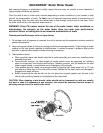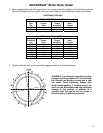
QUICKDRAW
®
Boiler Water Heater
8
6. In all installations, there should be no pulsation or water hammer since this causes vibration and
strain with resulting leaks.
7. Retighten bolting on all gasketed joints after the heat exchanger has reached temperature to
prevent leaks and gasket failures. Retightening should be done uniformly and in a diametrically
staggered pattern (see “Maintenance”).
a. On high pressure and high temperature applications or any application where spiral wound
gaskets are required, it is recommended that the gasketed joints of the heat exchanger be
retightened to the required torque (see “Maintenance”) after 24 hours at operating pressures
and temperatures to compensate for any relaxation or creep that may have occurred.
b. In shutting down, remove all power from the system. Close all boiler water and cold water supply
valves to the unit.
c. If the unit is removed from service for an extended period of time, it must be drain completely to
eliminate the possibility of freezing and corrosion from stagnant water conditions.
MAINTENANCE
WARNING: To reduce the risk of electrical shock injury or death, on control systems
using 120 volt external power, be certain switch is off and power disconnected before
work is performed on this heater.
Temperature and Pressure Relief Valve
Operate the temperature and pressure relief valve at least once a year by lifting the lever briefly. If the
valve does not open and close properly when testing, it must be replaced with a like relief valve.
Thermostats and Temperature Limiting Device
The temperature limiting device and thermostat temperature sensors extend into the water in the tank.
Depending on the water conditions in your area, scale may coat the sensors. This coating will affect
accuracy of sensors and can allow water temperature to exceed the desired limits. Remove and inspect
these controls at necessary intervals. Remove scale if present.
Control Valve Actuator
The boiler water control valve actuator is sealed and requires no maintenance. Durability of valve stems
and packing is dependent upon maintaining non-damaging water conditions. Inadequate water
treatment or filtration can result in corrosion, scale, and abrasive particle formation. Scale and
particulates can result in stem and packing scratches and can adversely affect packing life and other
parts of the Hydronic system. Contact the manufacturer for replacement packing and stem & plug
assembly.
Tank
Scale will normally form in the tank during operation and will accumulate on the bottom of the tank. The
natural chemicals in the water forms scale which precipitate out during the heating cycles. Some water
supplies contain more of these chemicals than others do, and the scale buildup will occur more rapidly.
Other factors affecting the scale buildup are the amount of hot water used and the temperature of the
water. The more hot water used the more fresh water containing the scale-forming chemicals enter into
the tank. As the temperature of the water increases, the rate of scale deposited also increases. The
frequency of inspections will be determined by the rate of scale buildup. Until the appropriate inspection




